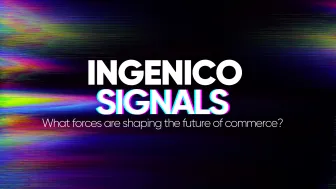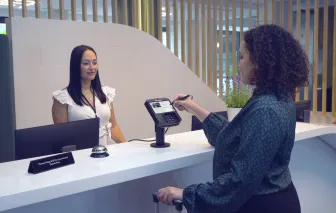It’s amazing how much innovation started in science fiction. Most of us know that the Motorola flip phone was based on the Star Trek communicator. Fewer people know perhaps that the idea for the defibrillator came not from a learned institution, but from Mary Shelley’s Frankenstein.
Similarly, Metaverse as a term first appeared in “Simulacron-3”, a late 1960s book. Whilst the word and idea of the Metaverse may have been around for a long time, since Mark Zuckerberg fired the gun on getting the idea into the world’s press, we are suddenly seeing a lot of attention on the subject. So, what is the Metaverse?
Sunday Times writer, Hugo Rifkind, provides this helpful explanation: “For something to be part of the Metaverse, it must be an online space in which a) you can interact, and b) that exists in some sense even when you are not in it.”
Kristi Woolsey, of BCG Platinion, describes it as "a combination of the virtual reality and mixed reality worlds accessed through a browser or headset, which allows people to have real time interactions and experiences across distance".
You may be familiar with virtual experiences created through headsets like the Oculus Rift, along with handheld controllers. Mobile phones and tablets also offer a very practical opportunity to enjoy augmented reality experiences such as “trying on” clothes or seeing what a new piece of furniture may look like in the corner of our room.
There are many other devices crowding onto the market to offer new and immersive experiences. For example, gaming devices that emulate 360-degree motion, headsets that send out artificially manufactured odours and even suits that enable the wearer to feel real pain when playing combat games.
So now we have access, what happens when we get there?
At the moment, the metaverse is generally clustered around a few activities, most prominently gaming but also more general entertainment. One emerging trend is high profile music events where artists perform in avatar form to a live audience. The most successful of these at the time of writing was Ariana Grande whose live concert on Fortnite reached an audience of 78 million fans.
The second big field of action is the surprising concept of a real estate market in a virtual world. Companies creating virtual worlds can sell space to individuals who see it as a form of speculative investment, or businesses that want to go where the young, tech savvy and potentially cash rich people are congregating. Real estate investors are “building” retail premises that they can rent to virtual shops and companies like UpEquity are already positioning themselves to process mortgage applications in the metaverse – even for real-world properties.
The highest profile growth in the metaverse has been a way to animate the market for of NFTs, non-fungible tokens and make it easier to experience them as though they were more tangible. Although often managed on a blockchain, NFTs differ from cryptocurrencies in that they are not designed for spending, and they may or may not have a value to someone else. An early example was the successful sale at auction of a digital dress. Sold by Dapper Labs in 2019 for $9,500, the winner was digitally “fitted” with the garment and has arguably the best dressed avatar in town.
So, what does the Metaverse look like?
To a certain extent, the Metaverse is driven by the tastes of the users and the imagination of the people who populate it. In reality, we are at the start of an environment where the entire industry is still learning how to make the user experience work. We can assume that in the next 5 years we will see orders of magnitude changes to bandwidth and computing power, enabling a far more realistic environment that we can see today.
Here are some live examples that show how the Metaverse is taking the familiar and broadening it out into whole new areas of commerce.
- Walmart has been using metaverse concepts since 2016, using virtual reality for employee training and development. Today, there are around 17,000 VR headsets in Walmart stores, giving over a million employees access to new training to help manage difficult situations. It’s a safe place to experience extreme customer service situations – a sort of ‘flight simulator’ for the checkout.
- Microsoft is looking to extend the benefits of videoconferencing through ‘Holoportation’, a collaboration tool for remotely located co-workers. Videoconferencing can be a fantastic way to stay engaged, but it’s also far removed from the real-world environment. Holoportation holds out the promise of visiting an office in the virtual world, interacting with real people in real time and exchanging cultural as well as factual experiences. We might expect to see this technology integrated with platforms such as Teams very soon.
- Cosmetics giant, Charlotte Tilbury, has expanded online shopping through stores in the metaverse where you can browse, try things on with your avatar and even meet friends there to shop and chat together as you walk around the store. When you’re happy with your choices, you can check out and the goods will be delivered in real life to your door. Customers can explore, shop, receive personalised advice, join live events, watch tutorials, and try make up.
- RFOX is an immersive metaverse platform with a clear focus on retail and e-commerce. Shops within RFOX may start off selling digital items but can quickly move into selling items for real world delivery. As a consumer, you might go to a virtual food court to order a pizza for real world delivery. Whilst you are waiting, you can shop or play a game.
- Lynx, a Canadian acquirer with a banking license and portfolio of crypto financial services, is working to integrate the existing financial payment and infrastructure with a metaverse virtual community. They have been quick to see that there are transactions happening out there which would work better with a professional transaction business behind them and have moved fast to make an early play in the metaverse, gaining a lot of industry recognition.
How this might all play out for the payment industry
The metaverse we see today is comparable to the first web browsers 25 years ago, it’s not what it will be in a few years’ time. Remember, if you invested in every dotcom on Nasdaq in the year 2000, it would have taken you 14 years to break even – if you were lucky enough to back the big winners among the almosts. Whilst many eary players failed to survive, the promises proved correct; the Internet did disrupt everything, it did kill a lot of traditional bricks and mortar businesses and it did shift the balance of power from seller to consumer in extraordinary ways.
For the retail payment industry, The metaverse means one thing: omnichannel just became a lot more complex, not only adding a new channel, but adding a new channel that no one even knows what it will look like. As a result, retailers are going to need as much agility as they can get. The point of sale is not any less important, but how it looks, feels and works may need to adapt very quickly to fit people’s idea of a seamless experience.
Acquirers, banks, and payment service providers will need a platform where their customers can de-risk their investment by ensuring the maximum flexibility. This could be as simple as a shift to more flexible, Android-based terminals in store such as Ingenico’s AXIUM Android range so that the user experience can be customised and new services can be added without huge integration projects. It should also mean a shift in expectations on manufacturers like us to share the risk on the longevity of our devices. If things are changing fast, then acquirers can no longer assume their terminals will last for three, four or even five years before being replaced. It is for us to share that risk by shifting our model to a mix of lower one-time costs and recurring fees for ongoing service, software and maintenance. That way we are strongly motivated to extend the life of our technology as far as possible – better for agility and better for the environment too.
But most importantly, we need to provide an infrastructure which will support payment types and consumer journeys that don’t even exist yet. Ingenico’s Payments Platform as a Service provides a central, cloud-based point of integration. It is workflow-driven so new payment models don’t need hard coding and can be adapted on the fly. And it is open to any participant – even our competitors - so members of our ecosystem can stay flexible whatever happens next.
It’s an exciting time for technology and, as usual, we in the payment industry are in the middle of the action.











